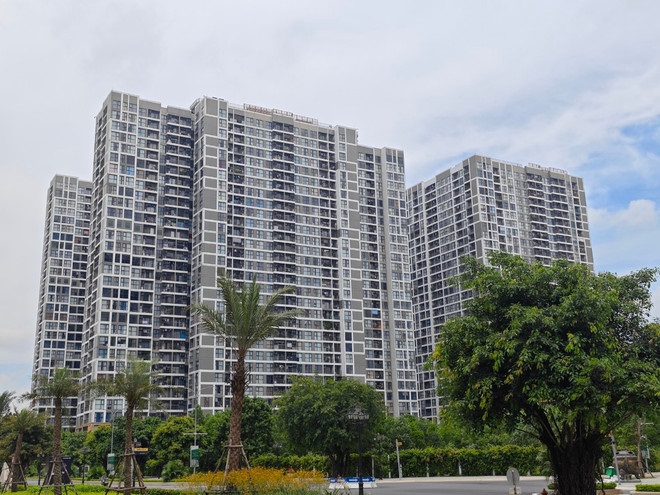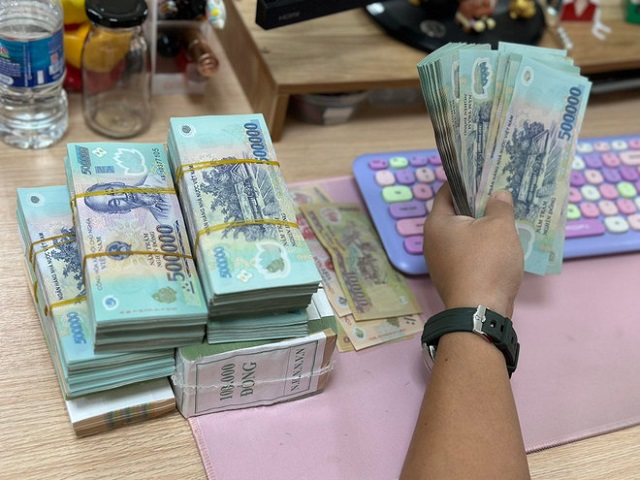Banks Offer Incentives to Boost Real Estate Market, but Customers Remain Wary of Loans

Banks offer incentives to encourage home loans. (Photo: Vietnam+)
|
In recent times, the banking sector has launched multiple credit incentive packages to support the real estate market. However, customers have been cautious and reluctant to take on these loans. The question arises: why are individuals and businesses still hesitant to borrow, despite the various stimulus policies?
Concerns over floating interest rates and long-term financial pressure
Over the past few weeks, banks have introduced home loan packages with advertised “ultra-low” interest rates of 3.99%-5% per annum, but these rates typically apply only for the first 3-6 months.
For instance, ACB offers loans to borrowers under 35 years old, with an interest rate of 5.5% for the first three months. SHB provides a VND 16 trillion credit package for home loans with an interest rate of 3.99% for the first three months. For the next 1-5 years, the rate will range from 8.3% to 10%, after which it will float.
Kienlongbank even offers a 0% interest rate for the first month of their VND 3 trillion home loan package, followed by a fixed rate of 8.8% for the next 18 months, and then a floating rate…
However, the common thread among these packages is that the promotional interest rates usually apply only for a short period, after which they switch to floating market rates that can reach 10%-12% per year or higher.
As a result, many individuals have become cautious due to the real estate crisis, where property prices soared while market demand remained subdued. Borrowers are concerned about their ability to repay loans in the future, especially with the economy still unstable. Many with a genuine need to purchase property are waiting for prices to drop further rather than rushing to take out loans at this time.

Many people want to buy homes but are wary of floating interest rates. (Photo: Vietnam+)
|
Sharing his thoughts on these incentives, Mr. Nguyen Van Chien (30 years old, Hanoi) said: “I considered taking out a home loan, but the low-interest rate only lasts for a few months, and I don’t know what will happen after that. With my current income, I’m afraid I won’t be able to manage if the interest rate increases later.”
Another reader, Ms. Tran Mai Hoa, opined that while the borrowing rate has decreased, real estate prices in major cities like Hanoi and Ho Chi Minh City remain astronomically high compared to the average income. A two-bedroom apartment in Hanoi’s outskirts currently ranges from VND 2.5-3.5 billion, while the average monthly income of a young family is only about VND 20-30 million.
Ms. Hoa expressed her concern: “The low-interest rate is good, but with such high property prices, taking out a bank loan means worrying about repayments every month, leaving little room for other expenses.”
Mr. Dinh Minh Tuan, Director of Batdongsan in the Southern region, stated that an interest rate below 6% for 3-6 months is merely a “bait” to attract customers. Short-term incentives are insufficient to alleviate financial pressure throughout the loan’s lifespan (typically 15-20 years), especially with the current high property prices.
Data from the State Bank of Vietnam also shows that home loan credit increased by only 6% in 2024, while general credit growth during the same period was 15%. These incentives have not been effective as property prices continue to soar, deterring potential borrowers.
Complicated loan procedures create obstacles
Another critical factor is the stricter evaluation of loan applications. Banks are now very cautious about real estate loans due to concerns over bad debt risks.
This situation makes it challenging for everyone to access loans, even those with a genuine need. Many customers have faced difficulties in proving their income or meeting the requirements for collateral.

Customers hope for more incentives and long-term fixed rates in the real estate sector. (Photo: Vietnam+)
|
For real estate businesses, the challenge lies in legal matters. Many projects have not completed the necessary legal procedures, making banks hesitant to disburse loans. Businesses want to borrow to develop projects but cannot meet the requirements, leading to a stalemate in both supply and demand.
Overall, it is evident that the issue goes beyond the availability of credit incentives and involves factors such as market psychology, borrowers’ repayment capacity, interest rate stability, and project legality. To genuinely boost the real estate market, we need not just bank support but also more synchronized policies from the government to ensure reasonable prices, legal transparency, and efficient capital flow.
In reality, despite the banking sector’s reform efforts to simplify processes, stringent requirements for income verification, collateral, and legal documentation continue to hinder access to capital for both individuals and businesses.
The Director of the Retail Banking Division of a bank explained that loan procedures could not be simplified further due to credit risk management and bad debt prevention. For instance, borrowers still need to provide real estate collateral, income proof through salary slips or employment contracts, and bear expenses for notarization, collateral, and insurance. However, these conditions inadvertently create barriers for freelance workers or low-income individuals.
Dr. Can Van Luc, an economist, commented: “Loan procedures remain a hidden obstacle. Banks need to be more flexible in assessing borrowers’ financial capabilities, such as accepting non-traditional forms of income proof like bank transactions and business invoices.”
However, experts argue that procedures are not the only hurdle. Other factors, such as high property prices, low incomes, and limited housing supply, also contribute significantly to customers’ indifference.
To break this deadlock, we need synchronized policies to reduce home prices, extend interest rate incentives, improve procedures, and direct capital flow to meet actual demands. Only then can real estate credit be truly effective, putting the market back on a sustainable growth path./.
Thuy Ha
– 14:28 26/03/2025
The Central Bank’s New Directive to Commercial Banks: Stabilize Deposit Rates, Lower Lending Rates
The State Bank (SBV) has requested that credit institutions maintain a stable and reasonable deposit interest rate, one that aligns with their capital balancing capabilities, healthy credit expansion, and risk management competencies. This move aims to contribute to the stability of the monetary market and interest rate environment.





















